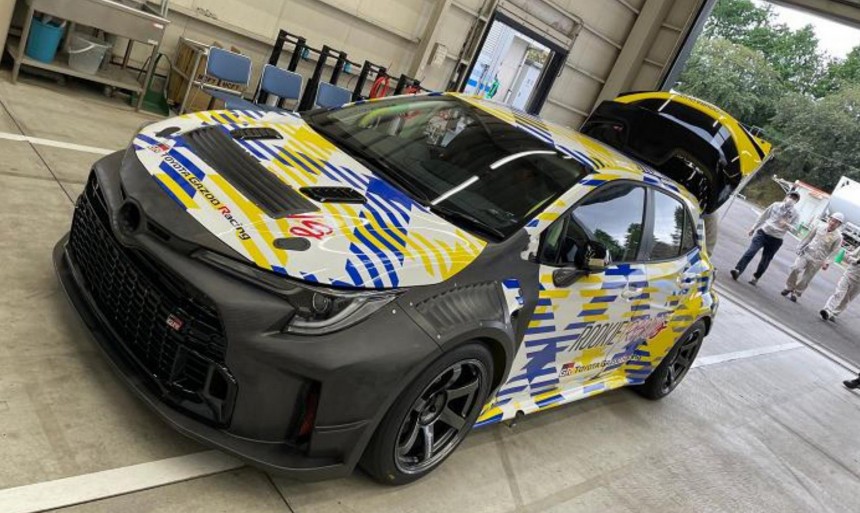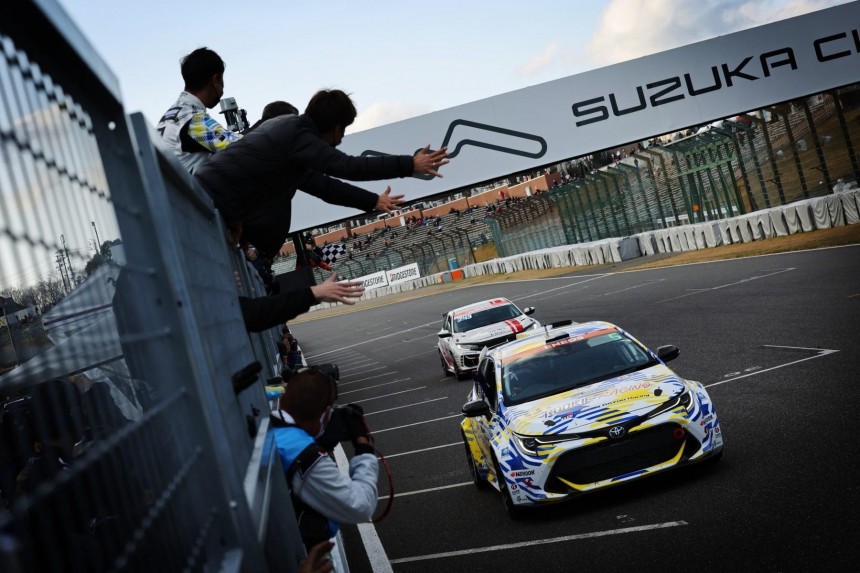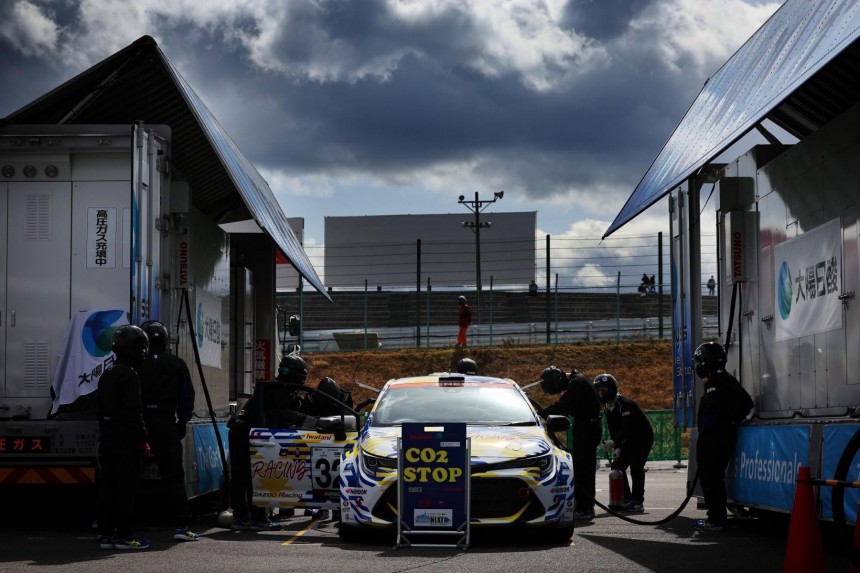Toyota is the world’s number-one car-manufacturing brand – by production volume – and the Japanese still have second thoughts about electrification. To clarify, the shogun of the automotive realm is less than ecstatic about battery-electric vehicles. The Asian giant is not keen to put on the running shoes to catch up with the rest of the industry. They have a more… universal approach toward carbon-neutering the automobile.
Whatever it is you’re doing right now, stop and take a long look at yourself. Keep going and gaze deeper – think atomic level-deeper. Now start counting the atoms; you’ll find plenty of hydrogen. I’m only kidding – don’t count, but know this. Hydrogen is the most abundant element in our bodies.
And in the whole Universe. It is also a significant energy source – stars are made of it (including our Sun), fossil fuels, and hydrogen bombs. The latter is a mere example of hydrogen’s omnipresence and explosive potential.
Toyota is no stranger to this vast resource and has been developing a hydrogen-burning ICE for over a year. Last month, they took it to the racetrack for testing – marking a motorsport premiere – the first liquid hydrogen-powered manufacturer race car.
On February 23, a GR Corolla powered by liquid hydrogen had a go around the Fuji Speedway in Oyama, Shizuoka. In the past years, the cars (same make and model) competing in Super Taikyu events relied on gaseous hydrogen.
The test mule ran three sessions during February 23 race simulations. The team hopes to compete in the 2023 Super Taikyu season (which debuts this month). Still a long way to mass-produced, general-use liquid-hydrogen ICE automobiles. Nonetheless, significant progress since October of last year, when the prototype saw its first partial test.
The main differences are storage and efficiency, as liquid hydrogen packs about 1.7 times more energy per volume unit. Roughly put, cars fueled with liquified H2 drive for longer distances between fill-ups. Also, it’s relatively more maneuverable than in its gaseous stage.
Hydrogen is the lightest element known to science, and it’s also a gas, which means it can be compressed and stored in tanks. The downside is the pressure needed for this – around 10,000 psi (690 bar / 680 atmospheres).
These extreme numbers require incredibly robust – and heavy – cylindrical containers to withstand the enormous forces. While technically feasible, it is impractical for at least two reasons. The sheer bulk of the tubes would be one, and their placement in the car is another.
Liquefying hydrogen, on the other hand, solves both those problems – at least partially – but raises new challenges. Hydrogen must stay at surreally low temperatures to condense into its liquid phase: negative 253 C (minus 423 F).
That’s not saying much, but consider the following as a yardstick: the coldest temperature recorded on Earth is a lowly – 89.2 C (- 128.6 F). Think of it like this: there is no place (that we know of) in our Solar system where hydrogen would stay liquid. Our Moon’s North Pole crater bed is -249 C (-416 F).
Hydrogen can be kept at standard pressure at this point, so the stubby high-pressure tubes are no longer required. This means, in plain English, that the fuel tanks can – in theory – have any shape, saving interior space.
But the liquid hydrogen bird in hand points to two in the bush: keeping the hydrogen liquid-cold would be the first. Minus 423 F (-253 C) is 20 degrees on the Kelvin scale, just 20 degrees above absolute zero. This is the next big obstacle for Toyota – insulating the fuel tank, so the combustible doesn’t evaporate. Until now, the technology was deemed unfeasible for passenger cars.
Liquid hydrogen fuel would be the (almost) carbon-free solution for ICEs. Technically, while the combustion itself only produces dihydrogen oxide (commonly referred to as “water” by non-academics), it’s not mathematically CO2-free.
A fraction of the cylinder lubricant would still be exposed to high temperatures and transform into carbon dioxide. The amount would be so tiny that it could be considered harmless, making the hydrogen ICE highly environmentally friendly.
To put it into perspective: one kilogram of liquid hydrogen has roughly the same energy density as one gallon of gasoline. In other words, a car running on pure H2 would have a comparable range to a traditional, ICE cap-hating automobile.
Apart from the science behind a large-scale deployment of this technology, there’s one elephant in the room, and it’s a monster – a kilogram of hydrogen costs around $15. You tell us if regular drivers would be alright with a $15/gallon gas price. And we haven't even opened the fuel stations availability topic.
Still, this technology is in its embryonic phase – remember where BEVs and hybrids were just two decades ago. Improvements can be made, but it takes more than science to break this circle. Play the video below for a quick but thorough lesson in liquid hydrogen automobility.
And in the whole Universe. It is also a significant energy source – stars are made of it (including our Sun), fossil fuels, and hydrogen bombs. The latter is a mere example of hydrogen’s omnipresence and explosive potential.
Toyota is no stranger to this vast resource and has been developing a hydrogen-burning ICE for over a year. Last month, they took it to the racetrack for testing – marking a motorsport premiere – the first liquid hydrogen-powered manufacturer race car.
The test mule ran three sessions during February 23 race simulations. The team hopes to compete in the 2023 Super Taikyu season (which debuts this month). Still a long way to mass-produced, general-use liquid-hydrogen ICE automobiles. Nonetheless, significant progress since October of last year, when the prototype saw its first partial test.
The main differences are storage and efficiency, as liquid hydrogen packs about 1.7 times more energy per volume unit. Roughly put, cars fueled with liquified H2 drive for longer distances between fill-ups. Also, it’s relatively more maneuverable than in its gaseous stage.
These extreme numbers require incredibly robust – and heavy – cylindrical containers to withstand the enormous forces. While technically feasible, it is impractical for at least two reasons. The sheer bulk of the tubes would be one, and their placement in the car is another.
Liquefying hydrogen, on the other hand, solves both those problems – at least partially – but raises new challenges. Hydrogen must stay at surreally low temperatures to condense into its liquid phase: negative 253 C (minus 423 F).
Hydrogen can be kept at standard pressure at this point, so the stubby high-pressure tubes are no longer required. This means, in plain English, that the fuel tanks can – in theory – have any shape, saving interior space.
But the liquid hydrogen bird in hand points to two in the bush: keeping the hydrogen liquid-cold would be the first. Minus 423 F (-253 C) is 20 degrees on the Kelvin scale, just 20 degrees above absolute zero. This is the next big obstacle for Toyota – insulating the fuel tank, so the combustible doesn’t evaporate. Until now, the technology was deemed unfeasible for passenger cars.
A fraction of the cylinder lubricant would still be exposed to high temperatures and transform into carbon dioxide. The amount would be so tiny that it could be considered harmless, making the hydrogen ICE highly environmentally friendly.
To put it into perspective: one kilogram of liquid hydrogen has roughly the same energy density as one gallon of gasoline. In other words, a car running on pure H2 would have a comparable range to a traditional, ICE cap-hating automobile.
Still, this technology is in its embryonic phase – remember where BEVs and hybrids were just two decades ago. Improvements can be made, but it takes more than science to break this circle. Play the video below for a quick but thorough lesson in liquid hydrogen automobility.



















